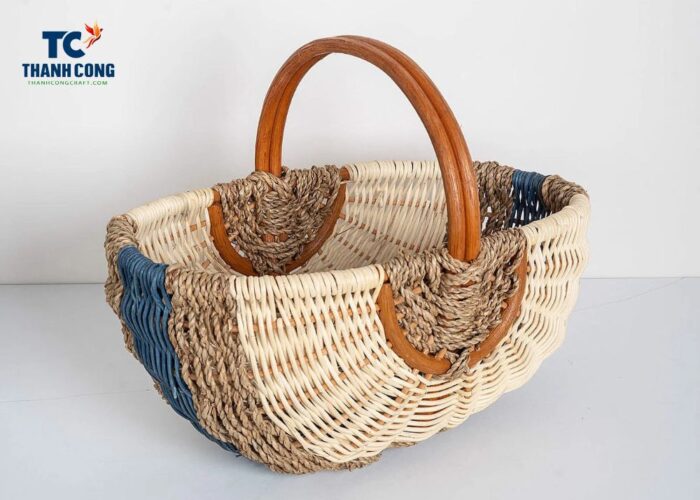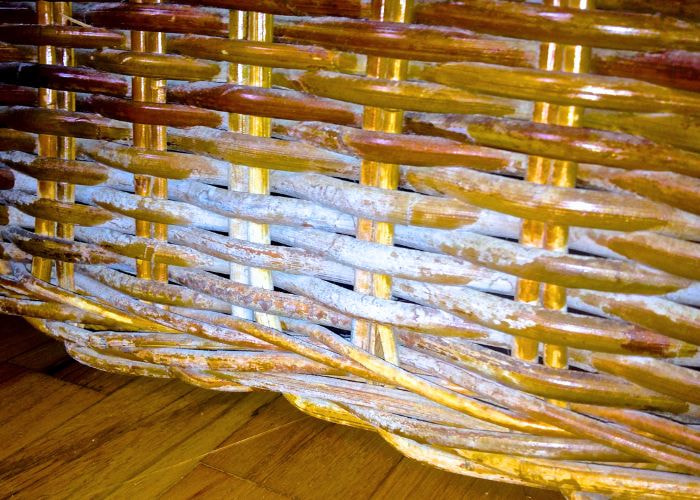Are you dealing with the frustrating issue of mold in your beloved wicker basket? But worry not! How to get mold out of wicker basket with 3 simple steps, you can effectively remove mold from your wicker basket and restore it to its former glory. Say goodbye to mold and hello to a revitalized wicker basket that looks as good as a new one!
Contents [hide]
1. How to get mold out of wicker basket?
If you are using wicker baskets to hold plants and they develop mold or mildew due to moisture, it is important to clean them immediately. Baskets used for food storage or food service should also be cleaned after every use.
Here are the things you will need to effectively clean and remove mold from your wicker basket.
- Vinegar
- Feather duster
- Bucket or container
- Soft-bristle brush or toothbrush
- Sponge
- Clean towel
- Vacuum cleaner
The steps to get mold out of wicker basket:
Step 1: Remove Loose Mold
Use a soft-bristle brush or an old toothbrush to gently remove as much loose mold as possible from the wicker surface.
Use a vacuum cleaner with a brush attachment to carefully vacuum the wicker. Especially the crevices and corners, to remove any remaining loose mold and debris.
Step 2: Prepare Cleaning Solution
Use a mixture of equal parts water and white vinegar or hydrogen peroxide if you prefer a natural solution.
Step 3: Scrub Gently
Dip a clean cloth or a soft-bristle brush into the cleaning solution. Gently scrub the affected areas of the wicker basket to get rid of mold on wicker basket.
Be cautious not to soak the wicker; you want it damp but not overly wet. Wipe the area with a clean, damp cloth afterward.
Rinse the wicker basket with a clean, damp cloth to remove vinegar residue. Ensure you don’t leave any moisture behind. Dry the basket thoroughly with a clean, dry cloth or towel.
If possible, place the wicker basket in direct sunlight. Sunlight can help kill any remaining mold spores and prevent future growth.

By following these steps, you can effectively remove mold from your wicker basket and restore its cleanliness.
2. Why does wicker go moldy?
There are several causes of mold and dampness in wicker, primarily due to the following two factors:
Inadequate wicker processing: After being harvested, the wicker needs to undergo processing and treatment to enhance the quality of the product. Currently, there are various methods available to protect wicker from wood-boring insects, such as using chemicals or water immersion.

Typically, the rattan is soaked in water for 3 to 5 months before being dried or air-dried. Wood-boring insects are a significant limitation for woven wicker products in general, especially in areas with a humid climate. Therefore, proper treatment for wood-boring insects is crucial in the production process of woven wicker lamps.
If there are oversights in the rattan processing stage, issues such as mold and wood-boring insects are likely to occur.
High environmental humidity: Rattan is a highly absorbent wood material. Therefore, if it is placed in a high humidity environment, it is prone to wood-boring insects, mold, and rapid deterioration. The primary reason is that, before becoming a finished product, wicker must undergo a drying process, making it highly susceptible to absorbing moisture.
3. Can mold on furniture make you sick?
Yes, mold on rattan furniture can potentially make you sick. Mold releases spores into the air, and when these spores are inhaled, they can cause a range of health issues. Some common symptoms of mold exposure include respiratory problems, allergies, coughing, sneezing, headaches, and irritated eyes, nose, and throat.
People with pre-existing respiratory conditions, allergies, or weak immune systems may be more susceptible to the effects of mold. It’s important to address mold issues promptly and take steps to remove and prevent its growth to maintain a healthy living environment.
4. How to stop wicker baskets going mouldy?
Your wicker baskets, seagrass baskets require basic care to maintain their longevity and pristine appearance. By following these simple steps, you can ensure that your baskets remain in excellent condition:
- Gently wipe your wicker baskets with a slightly damp cloth to remove dust and prevent it from accumulating in corners and cracks. Additionally, you can use a damp cloth to eliminate dirt marks from the baskets.
- Occasionally, place your baskets in direct sunlight. This helps to eliminate any issues caused by humidity, especially before and after the rainy season.
- Use white vinegar to clean mold from wicker baskets. This will prevent mold growth and keep pests at bay. When cleaning, opt for a cotton cloth or cotton diapers as they work well.
- To remove dust, utilize a dry paintbrush or nail brush. This is the most effective method for cleaning your wicker basket. Alternatively, you can use a vacuum cleaner with a brush attachment on a low suction setting.
- Store your baskets in a cool and dry area, away from moisture and humidity. Handle them with care to avoid damage. If you choose to hang the basket, ensure that you maintain an appropriate weight to prevent distorting its shape.
In just three simple steps, you can bid farewell to the stubborn mold that has invaded your wicker basket. By following these easy instructions, you can regain the pristine condition of your cherished basket and ensure its longevity. Don’t let mold dampen your spirits or ruin your precious belongings. Take control of the situation with our effective methods and say goodbye to mold for good.
Remember, prevention is key, so be proactive in keeping your wicker basket mold-free. With a little effort and these three simple steps, you can maintain a clean, mold-free wicker basket that will continue to bring joy and functionality to your space.
If you have any further questions, please don’t hesitate to contact THANH CONG HANDICRAFT EXPORT CO., LTD via email: info@thanhcongcraft.com or Tel/WhatsApp: +84967485411. Hope to serve you soon! Best regard!


